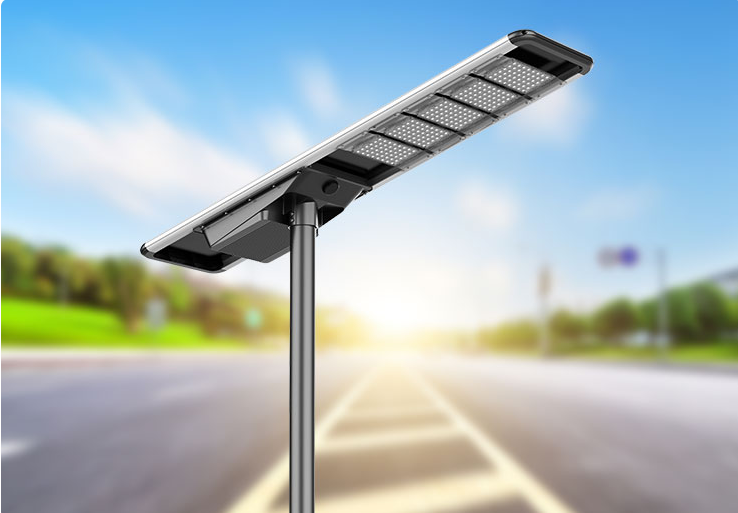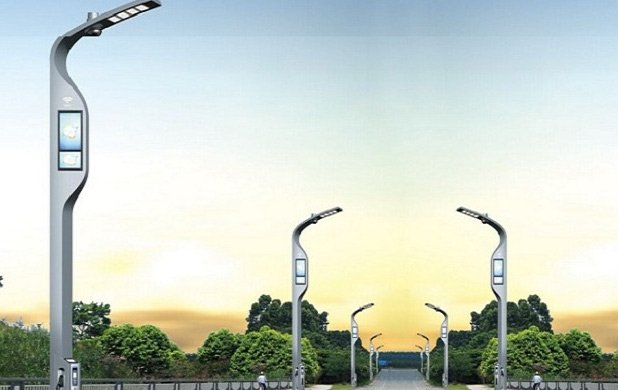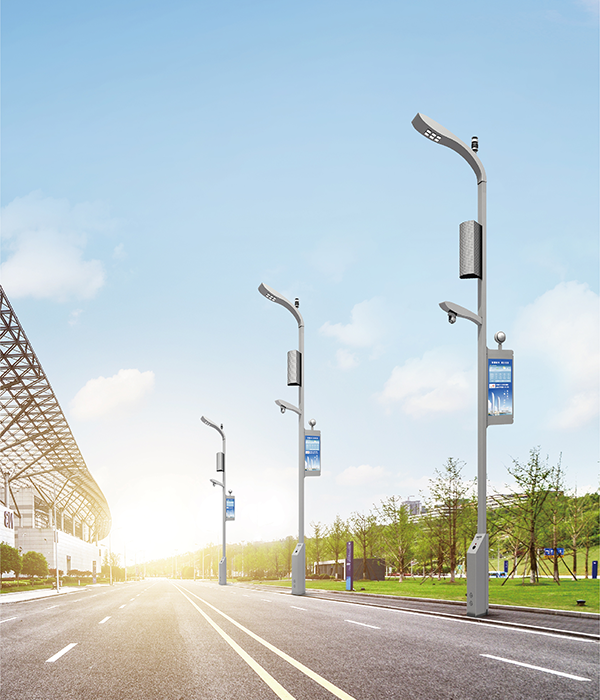Designing Smarter, Brighter, and Greener Streets in 2025
Modern solar LED street light design is transforming how cities and villages light their roads — combining efficiency, intelligence, and sustainability.
As power grids strain and maintenance budgets tighten, off-grid solar street lighting is no longer just a green choice — it’s an economic one. In 2025, design thinking goes beyond lumens and panels; it’s about system reliability, adaptive control, and long-term ROI.
In this guide, I’ll break down every layer of professional design — from system composition and parameter calculation to control logic, installation, and real cost analysis — based on lessons from more than a decade of field work across African and Asian projects.
What Makes a Solar Street Light System Work?
Core Components and Configuration Requirements
Each component must align with the site’s lighting demand, local weather, and autonomy goals.
| Component | Functional Role | Recommended Specifications |
|---|---|---|
| LED Light Source | Illumination and visibility | 4000–5000K color temp, CRI ≥70, ≥150 lm/W, IP65 |
| Solar Panel | Power generation | Monocrystalline ≥22% efficiency |
| Battery | Energy storage | LiFePO₄ or lithium-ion, ≥1500 cycles |
| Controller | System management | MPPT ≥95%, time + load protection |
| Pole & Bracket | Structural support | Hot-dip galvanized, wind resistance ≥120 km/h |
Tip: Google often pulls this table as a snippet for “solar street light system components.”
How to Calculate Solar Street Light Design Parameters
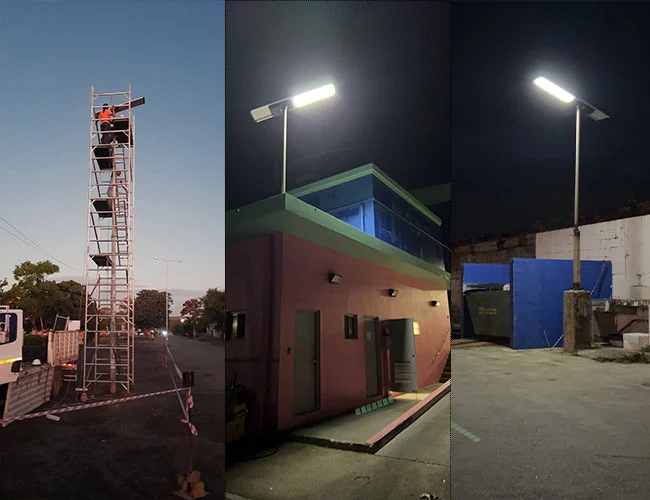
Step 1 – Lighting Demand Design
Design starts with knowing how much light your road truly needs.
| Road Type | Target Illuminance | Uniformity | Typical Spacing |
|---|---|---|---|
| Main Road | 15–30 lx | 0.35–0.4 | 30–35 m |
| Branch Road | 10–20 lx | 0.3–0.35 | 25–30 m |
| Pathway / Yard | 5–10 lx | 0.25 | 20–25 m |
Example:
For a 6 m-wide road with 25 m spacing, target 20 lx, and efficiency of 0.85, you’ll need about 94 W LED output (≈15,000 lumens).
Step 2 – PV System Capacity Calculation
Your solar array and battery must supply enough energy for the night and cloudy days.
- Daily load: Q₍day₎ = P₍LED₎ × operating hours
- PV panel sizing: P₍PV₎ = Q₍day₎ / (H₍peak₎ × 0.7)
- Battery capacity: C = Q₍day₎ / (V₍sys₎ × DOD × 0.9)
Example:
100 W × 10 h = 1000 Wh/day
At 4.5 h of peak sunlight → 317 W array → 2 × 160 W panels
Battery (24 V, 80% DOD) → ≈ 60 Ah lithium battery
Step 3 – Structural Design and Pole Sizing
| Road Type | Pole Height | Panel Tilt | Recommended Spacing |
|---|---|---|---|
| Branch Road | 4–6 m | Latitude + 5° | 25–30 m |
| Main Road | 6–8 m | Latitude + 10° | 30–35 m |
| Expressway | 8–12 m | Adjustable | 35–40 m |
Wind resistance guideline:
Flange plate ≥ pole diameter × 1.2
Example: 76 mm pole → flange 200 × 200 × 10 mm
How Smart Controllers Improve Efficiency

Multi-Mode Power Management
| Time | Operation Mode | Output Power |
|---|---|---|
| 18:00–22:00 | Full brightness | 100% |
| 22:00–24:00 | Traffic-responsive dimming | 50–70% |
| 00:00–06:00 | Safety lighting only | 30% |
Smart MPPT controllers combine real-time brightness adjustment, motion sensing, and ambient light detection to cut energy waste by up to 70%.
Snippet-ready answer:
Q: How do smart solar street light controllers save energy?
A: By adjusting brightness based on motion and ambient light, reducing consumption by up to 70%.
For cloudy seasons, consider grid or hybrid backup to ensure >95% lighting reliability year-round.
Installation and Maintenance: What Field Engineers Must Know
Construction & Installation Process
Avoid shortcuts — pole alignment and solar orientation decide 70% of performance.
- Site evaluation: Ensure no shading >2 h during winter solstice.
- Foundation depth: Pole height ÷ 10 + 0.2 m (6 m pole → 0.8 m).
- Wiring: Voltage drop ≤3%; underground battery cables ≥0.5 m depth.
- Grounding: <10 Ω resistance for surge protection.
Operation & Maintenance Schedule
| Component | Key Inspection Points | Frequency |
|---|---|---|
| Solar Panels | Cleaning, tilt correction | Monthly |
| Battery | Voltage ≥11.5 V (12 V sys) | Quarterly |
| LED Fixture | Lumen depreciation <3%/yr | Annually |
| Controller | Firmware and terminal check | Annually |
A well-maintained system lasts 10–15 years with minimal degradation.
Is Solar Street Lighting Economically Viable in 2025?
Cost Comparison (6 m Pole System)
| Item | Grid Lighting | Solar LED Lighting |
|---|---|---|
| Initial Cost | ¥8,000 | ¥12,000 |
| Annual Energy Cost | ¥600 | ¥0 |
| 10-Year Total | ¥14,000 | ¥12,000 |
Payback: (12,000 – 8,000) / 600 ≈ 6.7 years
After year 7, solar systems deliver free illumination.
ROI tip: When electricity cost exceeds ¥0.9/kWh, solar lighting beats grid-connected lights by 25–40% within 5–7 years.
Case Study – Rural Road Lighting Project (2024)
Project Overview
- Location: Southern Tanzania rural road, 2.5 km
- Road width: 5 m, double-sided layout
- LED power: 60 W × 2 units (9000 lm each)
- PV modules: 2 × 120 W
- Battery: 100 Ah @ 24 V
Performance Results
- Average illuminance: 18 lx
- Uniformity: 0.48
- Backup autonomy: 5 days
- Energy savings: 100% compared to grid system
Community feedback highlighted improved nighttime safety, and zero maintenance within the first 14 months.
Managing Risks and Ensuring Reliability
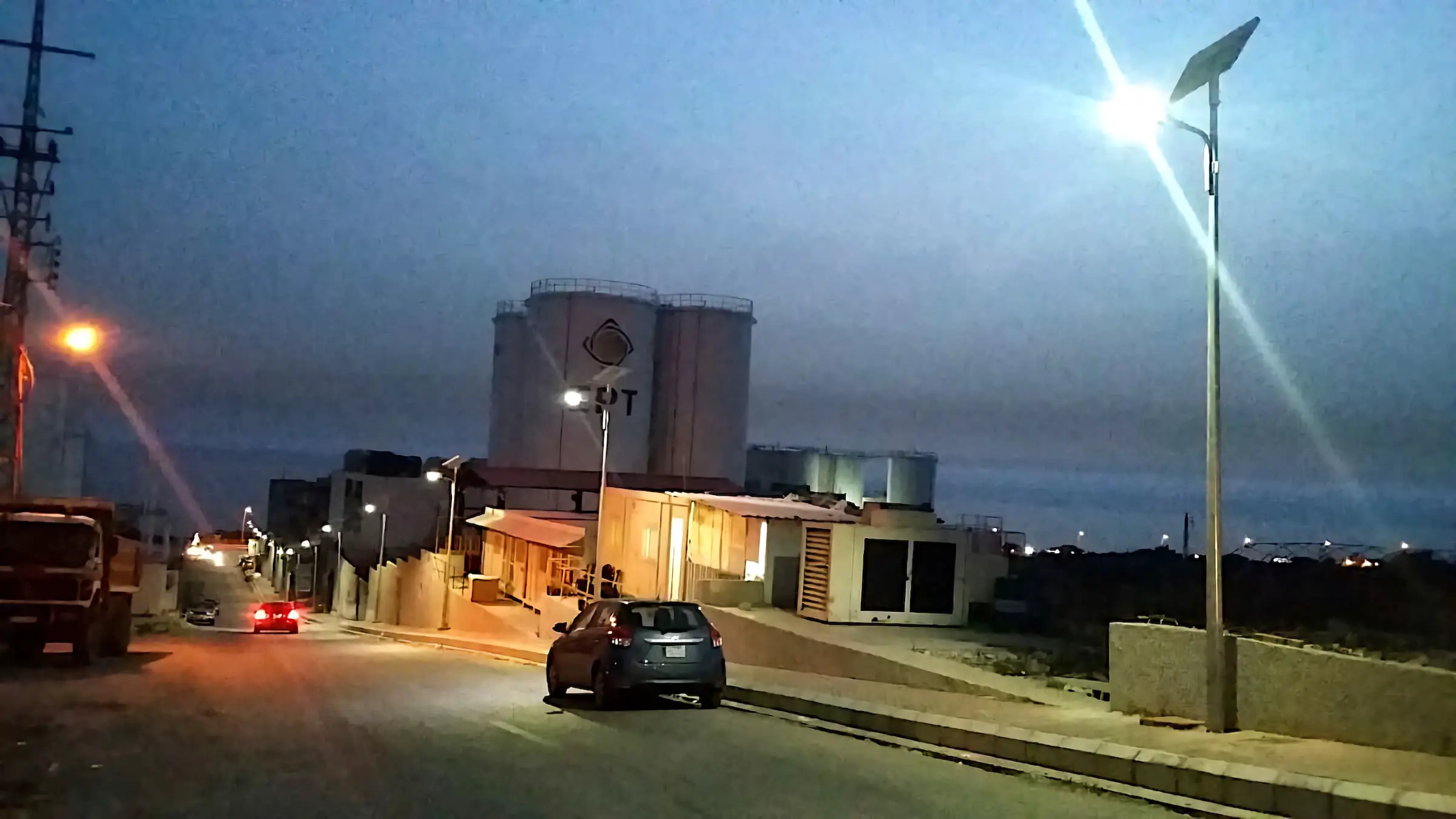
Electrical Safety
- Over-discharge cutoff ≥10.8 V (12 V system)
- Surge protection: SPD type II on DC bus
- Controller auto-recovery parameters per datasheet
Physical & Environmental Protection
- Anti-theft: Tamper-proof bolts, welded battery enclosure
- Weatherproof: Hail resistance ≥25 mm diameter (Class 3)
- Corrosion: Hot-dip galvanized poles per ISO 1461
Checklist for Site Engineers:
☑ Verify pole orientation and tilt
☑ Record battery voltage after 48h test
☑ Confirm IES file matches design layout
Recommended Tools and Resources
- DIALux / Relux – Lighting simulation
- PVsyst / SolarCalc – PV array and autonomy design
- MPPT Config Tool – Controller parameter tuning
- Excel or Python Sheets – Custom energy audit calculations
Conclusion – Data-Driven Design for the Next Decade
The best solar street light design in 2025 isn’t just bright — it’s smart, resilient, and optimized by data.
Modern systems blend AI-based dimming, ultra-efficient monocrystalline modules, and long-life lithium batteries to deliver reliable lighting through unpredictable weather and budgets.
But the secret remains simple: good engineering beats good marketing.
Design precisely, maintain consistently, and every light pole becomes a statement of sustainable progress.
FAQs – LED Solar Street Light Design (2025 Edition)
Q1: How do I calculate the LED power for my road?
A: Multiply target illuminance (lx) × area (m²) ÷ utilization × efficiency × maintenance factor.
Q2: What’s the ideal battery size?
A: Daily load ÷ (voltage × DOD × system efficiency). Typically 40–60 Ah for 100 W × 10 h systems.
Q3: How to choose between grid-tied and off-grid?
A: Go off-grid for remote roads; hybrid for urban or cloudy regions.
Q4: What’s the best tilt angle by latitude?
A: Latitude + 5–10°, adjustable for seasonal optimization.
Q5: How often should maintenance be done?
A: Panel cleaning monthly, full system check quarterly, controller update yearly.
Meta Description:





